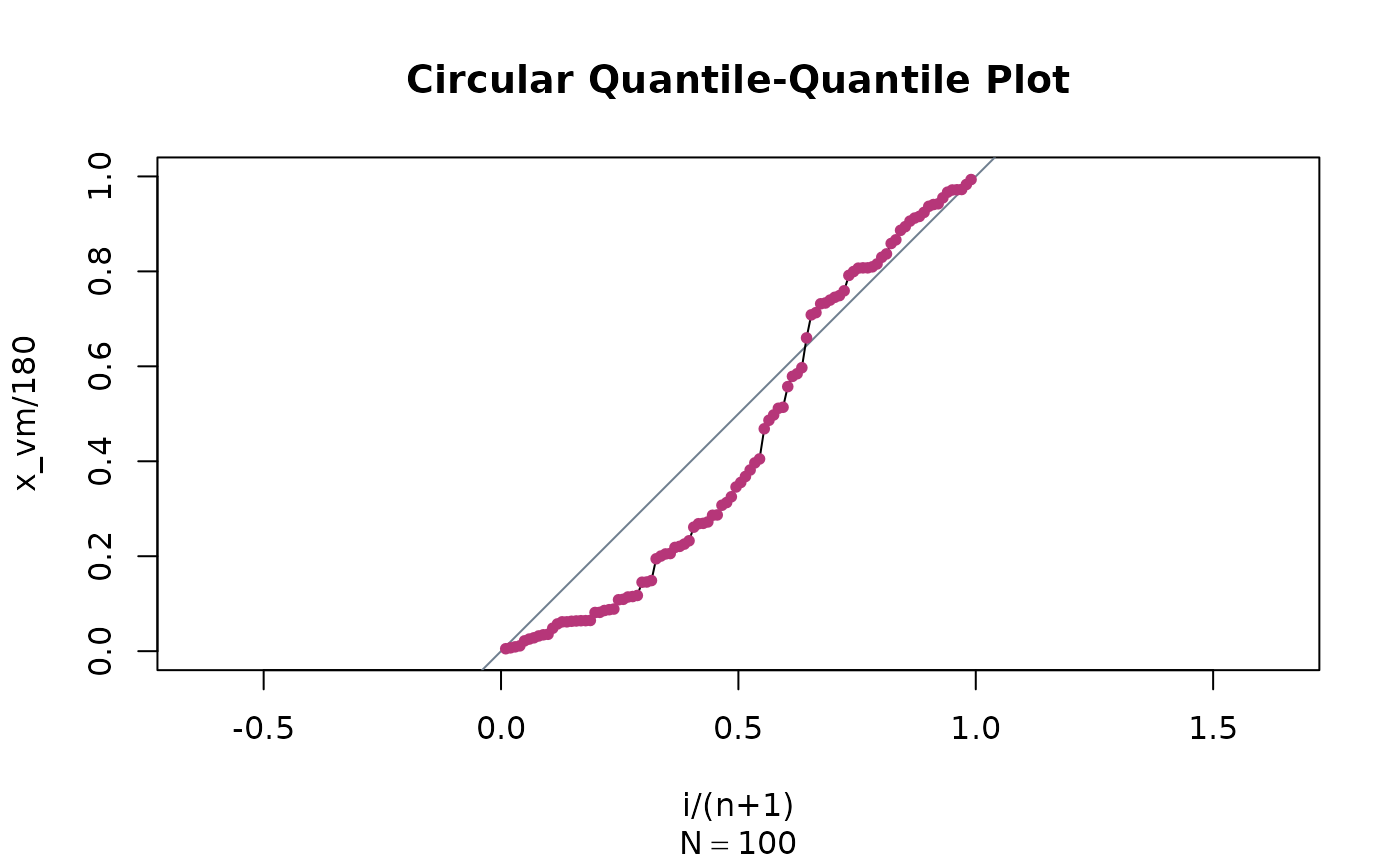Uniformly distributed orientations should yield a straight line through the
origin. Systematic departures from linearity will indicate preferred
orientation.
Usage
circular_qqplot(
x,
axial = TRUE,
xlab = paste("i/(n+1)"),
ylab = NULL,
main = "Circular Quantile-Quantile Plot",
add_line = TRUE,
col = "#B63679FF",
...
)
Arguments
- x
numeric. Angles in degrees
- axial
Logical. Whether data are uniaxial (axial=FALSE)
- xlab, ylab, main
plot labels.
- add_line
logical. Whether to connect the points by straight lines?
- col
color for the dots.
- ...
graphical parameters
References
Borradaile, G. J. (2003). Statistics of earth
science data: their distribution in time, space, and orientation (Vol. 351,
p. 329). Berlin: Springer.
Examples
# von Mises distribution
x_vm <- rvm(100, mean = 0, kappa = 2)
circular_qqplot(x_vm, pch = 20)
 x_norm <- rnorm(100, mean = 0, sd = 25)
circular_qqplot(x_norm, pch = 20)
x_norm <- rnorm(100, mean = 0, sd = 25)
circular_qqplot(x_norm, pch = 20)
 # uniform (random) data
x_unif <- runif(100, 0, 360)
circular_qqplot(x_unif, pch = 20)
# uniform (random) data
x_unif <- runif(100, 0, 360)
circular_qqplot(x_unif, pch = 20)




